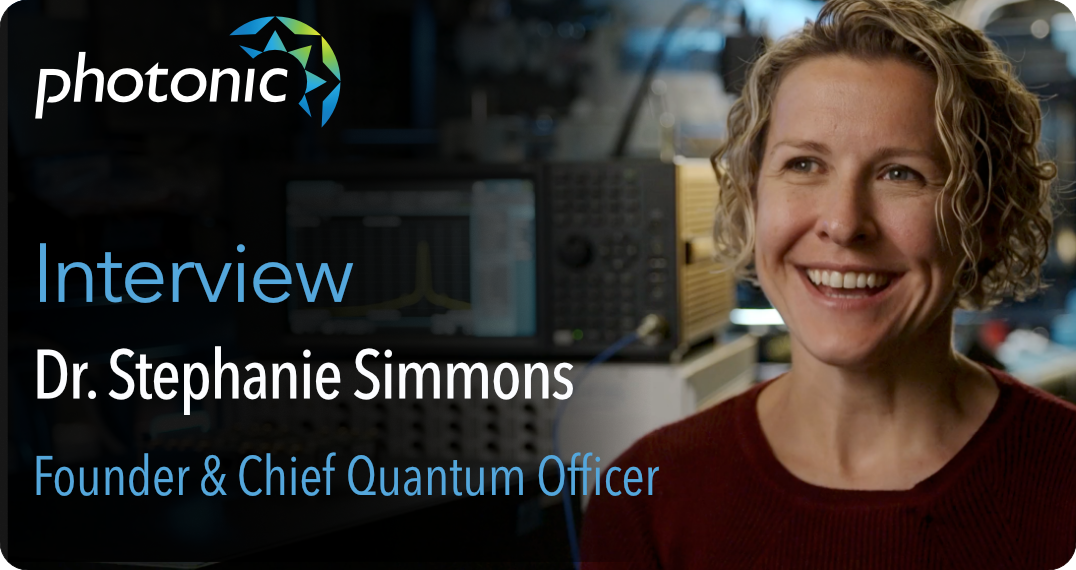In an interview Dr Stephanie Simmons, Chief Quantum Officer of Photonic Inc., explains the need to scale quantum computers and their approach to tackling this challenge to pave the way for reliable, large-scale quantum computing.
Learn more and watch the interview here.
Insider Brief
- Scaling quantum computers is critical to unlocking exponential speed-ups that will provide the power to solve some of the world’s biggest problems.
- Quantum computing is evolving through three phases to eventually scale to unlock fault tolerance, at which point, it is possible to fully exploit the technology’s transformative potential.
- Distributed entanglement is the key ingredient that allows for distributed quantum computing and horizontal scaling.
For quantum computers to move from laboratory to commercialization, these devices will need to scale to millions of qubits.

Scaling quantum computers is critical to unlocking exponential speed-ups to help solve some of the world’s biggest problems and unlock its greatest opportunities, said Stephanie Simmons, CQO of Photonic Inc., a company focused on using its photonically linked spin qubits in silicon to build a scalable, fault-tolerant and distributed quantum system.
“Scaling quantum computers is the grand challenge, not delivering just quality, but also quantity because it is the case that you can unlock exponential speed ups of really important problems,” said Simmons, adding that quantum computing is anticipated to evolve through several phases, each bringing innovators closer to achieving reliable, large-scale quantum computation.
The Phases of Quantum Technology Development
According to Simmons, computing tech is in the midst of an evolution through three phases:
- Phase One involves noisy intermediate-scale quantum (NISQ) systems. These small-scale systems are unable to perform error-corrected operations and are primarily experimental.
- Phase Two introduces the ability of error correction to boost reliable quantum computation. However, the operations remain constrained within the size of a single quantum computing module, limiting scalability.
- Phase Three is where the quantum computing landscape transforms. This phase is marked by the development of horizontal modularity—coordinating numerous quantum modules into a large-scale quantum supercomputer. This phase aims to unlock the full potential of quantum technology, leveraging quantum networks to connect multiple systems.
The team at Photonic is making progress toward Phase Three — leveraging networks to connect multiple systems — by conceptualizing quantum computers at scale as, in some sense, quantum networks.
“By coming at it from that perspective, we’ve been able to think about the ability to link systems together from the very, very fundamental building blocks,” said Simmons. “The most important ingredient to link systems in phase three quantum computing, or networked quantum computing, is the ability to get entanglement between more than one “box.'”
The Role of Entanglement
Central to achieving scalable quantum computing is the concept of entanglement. Entanglement is the key ingredient that allows for networked quantum computing and horizontal scaling. By generating high-performance entanglement between multiple systems, Photonic hopes to significantly enhance quantum computers’ performance and expand their capability.
Photonic researchers have recently been able to demonstrate distributed entanglement between multiple computer chips; in the time scale of qubit development, this is a major feat since T centres were only proposed as a qubit platform four years ago. These T center qubits emit photons—particles of light—that become entangled with the spins left behind. When these particles interact, they trigger entanglement between the spins, forming the basis for distributed quantum computation.
“It’s astonishing — It’s old physics and it’s been known since the 80s, but, here, we’re deploying it in a commercial setting,” said Simmons. “These are what are called spin-photon interfaces, which means they have the compute capabilities in the spin, but they also have the communication capabilities of photons and that link it through telecom fiber, which is the regular fiber that’s used to string together all of today’s modern data centers. So, it’s a super lightweight connection, but because of that, we can now get distributed entanglement and the ability to do distributed computation using that entanglement.”
The Future of Quantum Computing
To deliver useful quantum algorithms in a modular, networked Phase Three system, a mastery of entanglement will be necessary because entanglement acts as the glue that enables these larger-scale systems to function effectively, according to Simmons.
Large-scale, exponential speed-ups in quantum computing—the main goal of the quantum computing industry —then becomes achievable.
“Then, we can unlock these Phase Three large scale exponential speed-up kinds of quantum opportunities that the whole world has been working towards for 20 years.”
To learn more about how Photonic is revolutionizing the future of quantum computing, visit www.photonic.com Photonic is building one of the first scalable, distributed, fault-tolerant and unified quantum computing and networking platforms, based on optically-linked silicon spin qubits. Photonic’s platform offers a native telecom networking interface and the manufacturability of silicon. Photonic has built one of the world’s largest teams of quantum silicon experts and curated an incredible array of advisors and collaborators.
Join Photonic Inc on its journey to unlock the true potential of quantum computing. Watch the interview here.
















